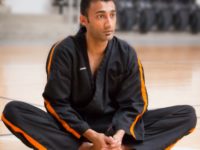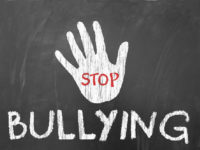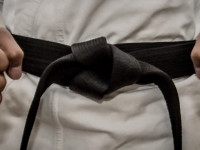Stretching

Budō



There are 3 basic elements to good Karate; Kihon (basic techniques), Kata (training exercises with predetermined moves), and Kumite (sparring). These 3 key foundations are also referred to as 3 K's.
Many Karate specialists say that Kumite is the spirit of Karate and Kata is the soul, but without your Kihon neither can exist. Thus an equal amount of attention must be given to all 3 basic elements in your training.
When Shōtōkan was being developed, Master Funakoshi's key area of focus was Kata and character building. With the help of his son Gigō Funakoshi, Kihon was then created to better understand Kata fundamentals and to make it easier to teach the complexities of Katas. Although Master Gichin Funakoshi did not encourage Kumite, he later allowed his son to develop this last element.

You’re alone on a city street at night, the prey of an attacker determined to do you in. Without a hint of fear, he approaches you, demanding your money and threatening your life. Will you surrender and add your name to his list of victims? Or will you maintain control, fight back and turn the situation to your advantage?
Grapplers, Thai boxers and mixed-martial arts enthusiasts claim their techniques can help you escape such deadly confrontations — and they’re right. But they’re not your only options. Traditional arts such as Shotokan Karate can help you repel an attacker just as effectively.
Gichin Funakoshi (November 10, 1868 – April 26, 1957) is the founder of Shotokan Karate-Do, perhaps the most widely known style of karate, and is attributed as being the "father of modern karate". Following the teachings of Anko Itosu and Anko Asato, he was one of the Okinawan karate masters who introduced karate to the Japanese mainland in 1922. He taught karate at various Japanese universities and became honorary head of the Japan Karate Association upon its establishment in 1949.